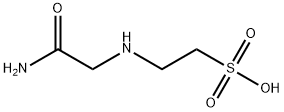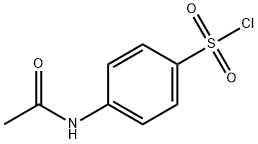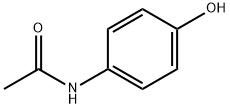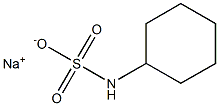ACES
Synonym(s):N-(2-Acetamido)-2-aminoethanesulfonic acid;N-(Carbamoylmethyl)-2-aminoethanesulfonic acid;N-(Carbamoylmethyl)taurine;ACES
- CAS NO.:7365-82-4
- Empirical Formula: C4H10N2O4S
- Molecular Weight: 182.2
- MDL number: MFCD00008030
- EINECS: 230-908-4
- SAFETY DATA SHEET (SDS)
- Update Date: 2025-09-09 13:52:16

What is ACES?
Description
ACES is a zwitterionic buffering agent used in biochemistry and molecular biology that was first selected and described by Good et al. It is a paraacetamide buffer suitable for environments with a pH of 6.1 - 7.5. ACES can be used as a buffer component in cell culture media for use in agarose and polyacrylamide electrophoresis and in isoelectric focusing of proteins. It forms complexes with most common metals, and the formation constant should be taken into account when using such buffers in solutions containing metal ions.
Chemical properties
ACES (N-(Carbamoylmethyl)taurine) is white crystals
The Uses of ACES
N-(Carbamoylmethyl)taurine can be used to study biological buffers and zwitterionic compounds. ACES has been used in a study to determine the levels of ibuprofen and flurbiprofen in pharmaceuticals by capillary zone electrophoresis.
The Uses of ACES
Buffer for biological systems.
The Uses of ACES
ACES is used as a Good's buffer is an ideal separator in the resolution of protein systems, a zwitterionic compound used in biochemical and biological research.
What are the applications of Application
ACES is a zwitterionic compound used in biochemical and biological research
Definition
ChEBI: ACES (N-(2-acetamido)-2-aminoethanesulfonic acid) is a Good's buffer substance, pKa = 6.9 at 20 ℃. It is an ACES and an amino sulfonic acid. It is a tautomer of a 2-[(2-amino-2-oxoethyl)ammonio]ethanesulfonate.
Preparation
In the presence of the reaction solvent tetrahydrofuran, add nitrogen-containing reagent ammonia into the reactor to react with the raw material, wherein the molar ratio of ammonia to theraw material is 1:1. The reaction temperature is 60°C, the reaction pressure is 1 MPa (gauge pressure), and the reaction time is 8 hours. After the reaction is completed, it is acidified to generate ACES. Then spin off the solvent tetrahydrofuran, add ethyl acetate, wash twice with water, dry with anhydrous sodium sulfate, and spin off the ethyl acetate to obtain the crude ACES. Purification stepIn the reactor, the purified solvent tetrahydrofuran was added to dissolve the crude ACES, recrystallized at low temperature, the insoluble matter was removed by suction, and the filtrate was rotary evaporated to remove tetrahydrofuran to obtain refined ACES.
Purification Methods
Recrystallise ACES from hot aqueous EtOH. [Perrin & Dempsey Buffers for pH and Metal Ion Control Chapman & Hall, London 1974, Beilstein 4 III 1707.]
Properties of ACES
| Melting point: | >220 °C (dec.)(lit.) |
| Boiling point: | 404.49℃ |
| Density | 1.484±0.06 g/cm3(Predicted) |
| vapor pressure | 0Pa at 25℃ |
| storage temp. | room temp |
| solubility | H2O: 0.1 M at 20 °C, clear, colorless |
| form | Crystals |
| color | White |
| PH | 2.5-4.5 (25℃, 0.1M in H2O) |
| pka | 6.8(at 25℃) |
| PH Range | 6.1 - 7.5 |
| Water Solubility | soluble |
| λmax | λ: 260 nm Amax: 0.008 λ: 280 nm Amax: 0.005 |
| Merck | 14,36 |
| BRN | 2253770 |
| CAS DataBase Reference | 7365-82-4(CAS DataBase Reference) |
| EPA Substance Registry System | Ethanesulfonic acid, 2-[(2-amino-2-oxoethyl)amino]- (7365-82-4) |
Safety information for ACES
| Signal word | Danger |
| Pictogram(s) |
 Corrosion Corrosives GHS05 |
| GHS Hazard Statements |
H314:Skin corrosion/irritation |
| Precautionary Statement Codes |
P260:Do not breathe dust/fume/gas/mist/vapours/spray. P264:Wash hands thoroughly after handling. P264:Wash skin thouroughly after handling. P280:Wear protective gloves/protective clothing/eye protection/face protection. P363:Wash contaminated clothing before reuse. P301+P330+P331:IF SWALLOWED: Rinse mouth. Do NOT induce vomiting. P303+P361+P353:IF ON SKIN (or hair): Remove/Take off Immediately all contaminated clothing. Rinse SKIN with water/shower. P405:Store locked up. |
Computed Descriptors for ACES
| InChIKey | DBXNUXBLKRLWFA-UHFFFAOYSA-N |
ACES manufacturer
New Products
4,4-Difluoropiperidine hydrochloride tert-butyl 9-methoxy-3-azaspiro[5.5]undecane-3-carboxylate Indole Methyl Resin N-Isopropylurea N,N-Dicyclohexylcarbodiimide(DCC) MELDRUMS ACID 5-METHYLISOXAZOLE-4-CARBOXYLIC ACID Magnessium Bis glycinate Zinc ascorbate 1-bromo-2-butyne 2-acetamidophenol 9(10H)-anthracenone Erythrosin B, 4-Piperidinopiperidine 2-((4-morpholinophenylamino) (methylthio) methylene) malononitrile 2,4-dihydroxybenzaldehyde 3-(4-morpholinophenylamino)-5-amino-1H-pyrazole-4-carbonitrile Methyl 2-methylquinoline-6-carboxylate 2,6-dichloro-4-nitropyridine 4-Bromo-2-chlorobenzonitrile 2-(benzylamino)acetic acid hydrochloride 4-(tert-Butoxycarbonylamino)but- 2-ynoic acid 3,4-dihydro-2H-benzo[b][1,4]dioxepine 1-Phenyl-1-cycloprppanecarboxylicacidRelated products of tetrahydrofuran








You may like
-
 ACES BUFFER 99%View Details
ACES BUFFER 99%View Details
7365-82-4 -
![N-(2-Acetamido)-2-aminoethanesulfonic Acid [Good's buffer component for biological research] CAS 7365-82-4](https://img.chemicalbook.in//Content/image/CP5.jpg) N-(2-Acetamido)-2-aminoethanesulfonic Acid [Good's buffer component for biological research] CAS 7365-82-4View Details
N-(2-Acetamido)-2-aminoethanesulfonic Acid [Good's buffer component for biological research] CAS 7365-82-4View Details
7365-82-4 -
 Aces buffer CAS 7365-82-4View Details
Aces buffer CAS 7365-82-4View Details
7365-82-4 -
 ACES Buffer extrapure CAS 7365-82-4View Details
ACES Buffer extrapure CAS 7365-82-4View Details
7365-82-4 -
 ACES Buffer CAS 7365-82-4View Details
ACES Buffer CAS 7365-82-4View Details
7365-82-4 -
 ACES CAS 7365-82-4View Details
ACES CAS 7365-82-4View Details
7365-82-4 -
 ACES buffer 99% CAS 7365-82-4View Details
ACES buffer 99% CAS 7365-82-4View Details
7365-82-4 -
 ACES BUFFER For Molecular Biology CAS 7365-82-4View Details
ACES BUFFER For Molecular Biology CAS 7365-82-4View Details
7365-82-4
